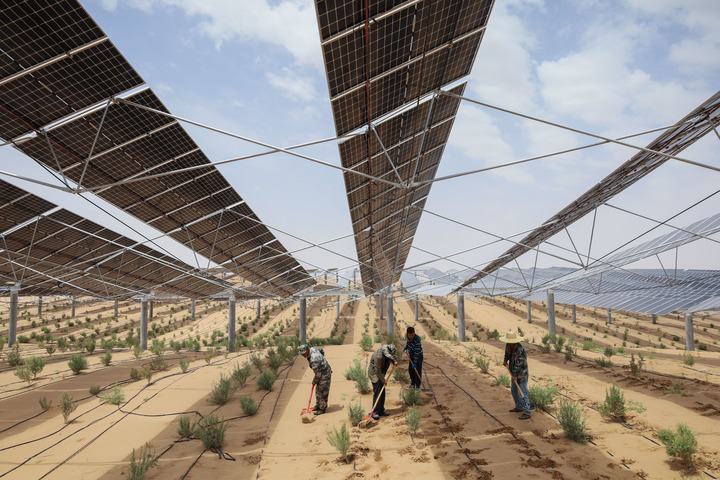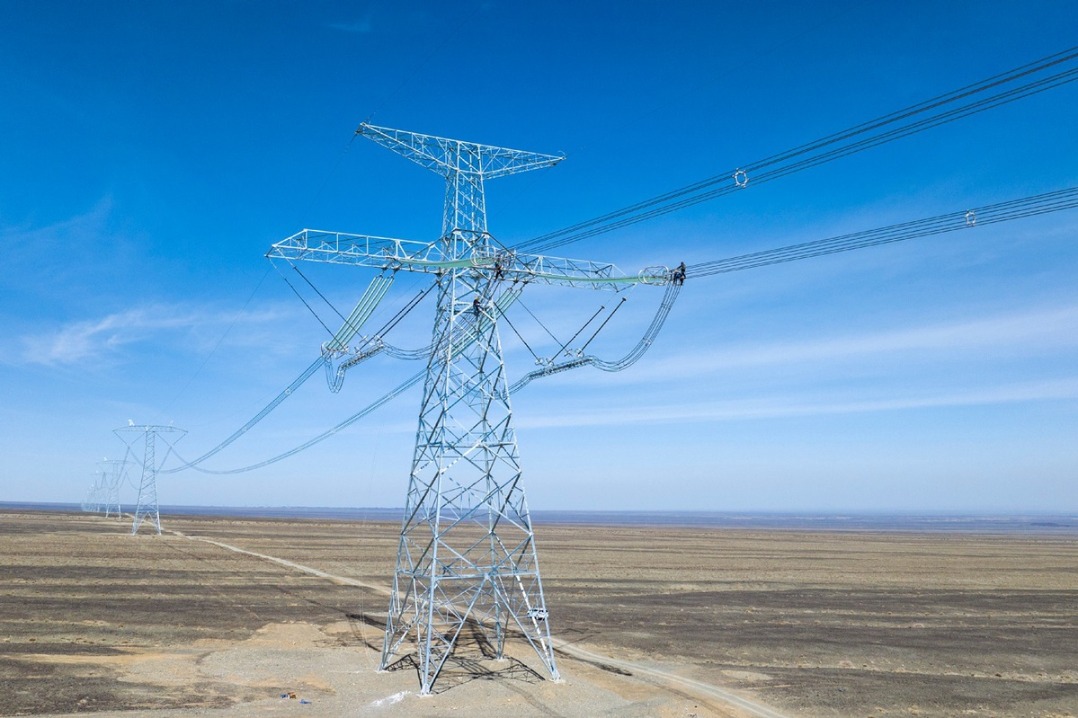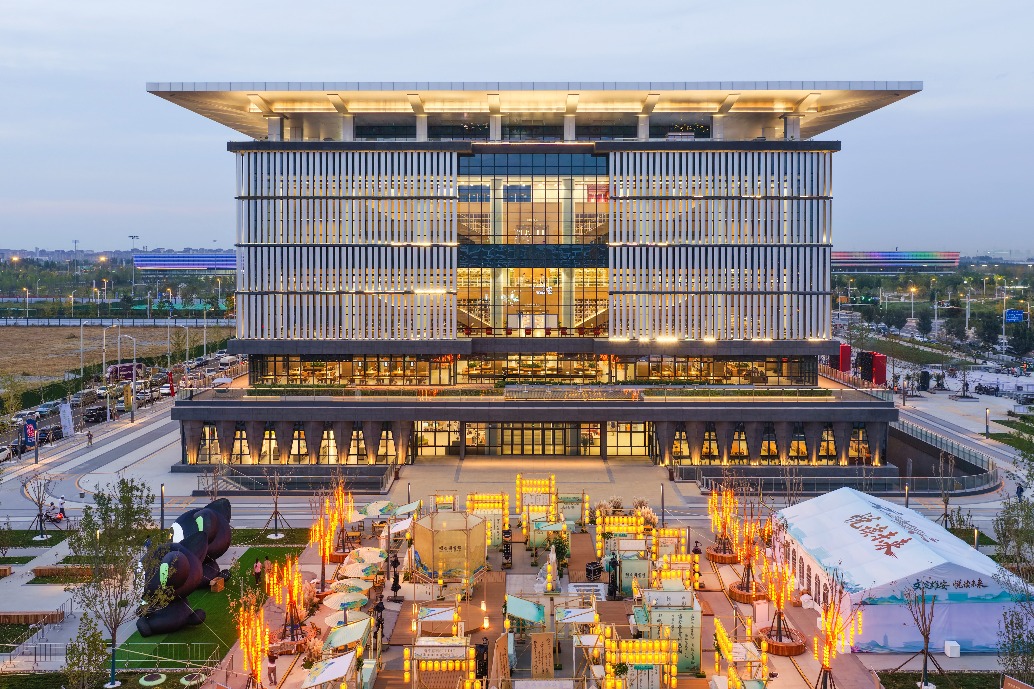Green efforts transform once barren land into oasis


LANZHOU -- On the southern fringes of Badain Jaran and Tengger, two large deserts covering 85,000 square km in China, Qin Zhaoping is testing the spray device for the fast-growing sand plants.
For Qin, a farmer in Hengliang Township, Wuwei City, northwest China's Gansu Province, such luxuriant vegetation was once beyond imagination.
Gansu, home to over 12 million hectares of sandy land, has been exploring a variety of new measures to bring a verdant look to the formerly barren land.
In today's desert area, photovoltaic panels provide shade for the plants, while efficient water-saving spraying facilities keep them thriving.
"The photovoltaic industry has been deeply integrated with local ecological protection endeavors," said Li Zhenhai, deputy director of the Wuwei development and reform commission.
Li added that over 1,300 hectares of desert plants have been grown in the photovoltaic sand control demonstration park in Wuwei, building up a solid green barrier to boost sand control.

In the eyes of local residents, harnessing photovoltaic panels for sand control is killing two birds with one stone and benefiting future generations. "It not only generates electricity and greens the sandy land but also increases our income," said Qin.
Placing straw checkerboard barriers has also proved an effective method to battle desertification, as they help reduce wind speed and can hold water used to help plants grow.
Yet as labor costs continue to rise, so do the costs of combating desertification. In response, Gansu has turned to technology for assistance.
- Taipei Confucius Temple holds annual ceremony marking Confucius' birth
- Former agricultural minister sentenced for bribery
- Grassland justice delivered on horseback
- China braces for holiday travel surge
- Refined legal services streamline border trade
- Fujian coast guard conducts routine patrol in waters near Kinmen





































